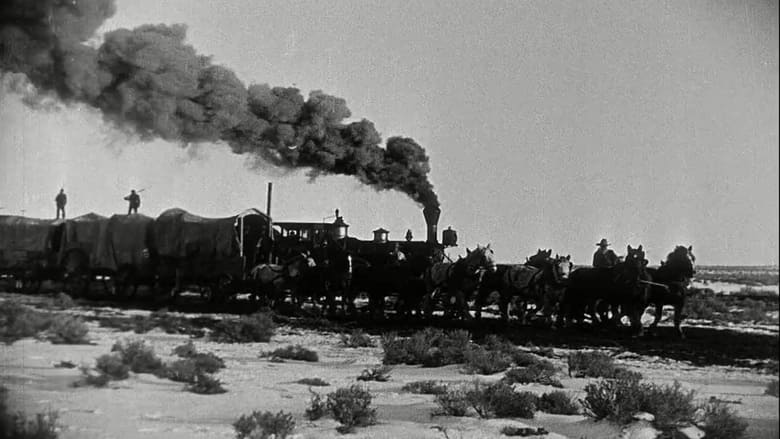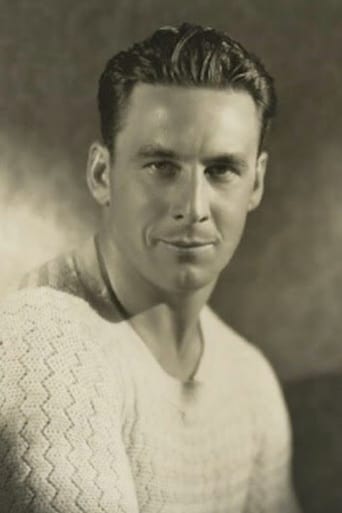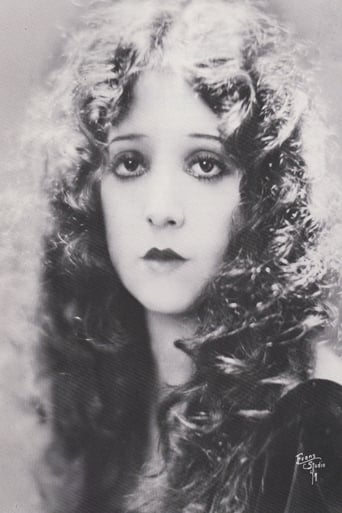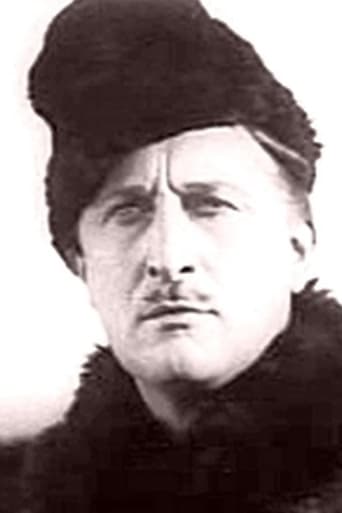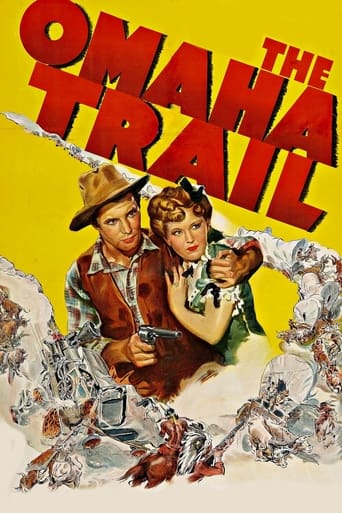The Iron Horse (1924)
Brandon, a surveyor, dreams of building a railway to the west. He sets off with his son, Davy, to survey a route. They discover a new pass which will shave 200 miles off the expected distance, but they are set upon by a party of Cheyenne. One of them, a white renegade with only two fingers on his right hand, kills Brandon and scalps him. Davy is all alone now.
Watch Trailer
Cast
Similar titles

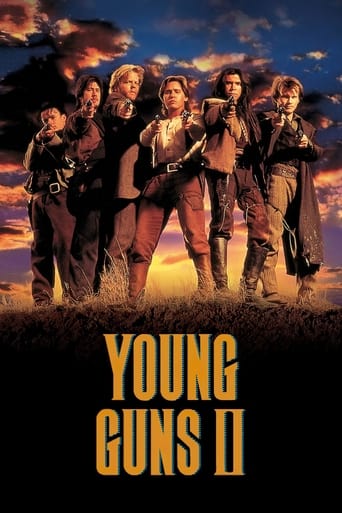
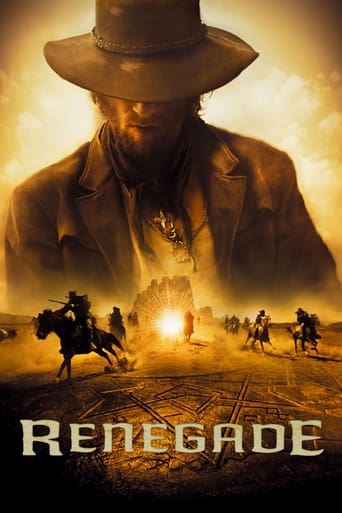
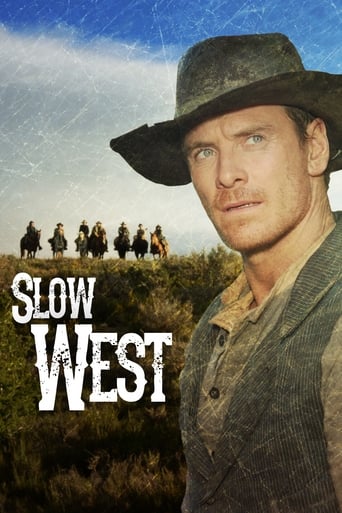
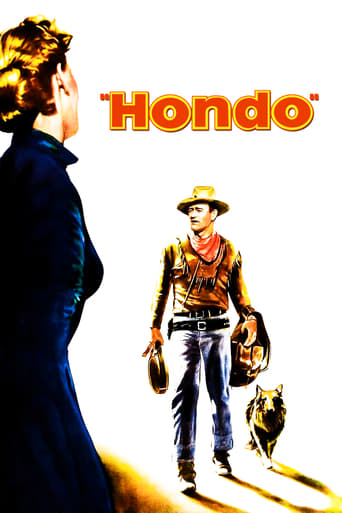
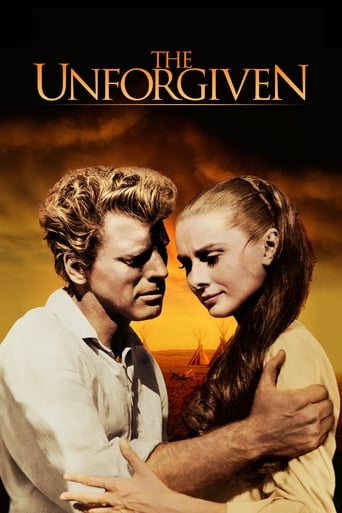
Reviews
hyped garbage
A great movie, one of the best of this year. There was a bit of confusion at one point in the plot, but nothing serious.
The film may be flawed, but its message is not.
It is encouraging that the film ends so strongly.Otherwise, it wouldn't have been a particularly memorable film
I just got to see this and it is a great movie! Classic John Ford! I won't repeat what the other reviews say but rather add some things not pointed out by others: The barroom fight scene is amazing. The crowd hold up lanterns to illuminate the brawl and this creates an amazing effect. The crowd surround the two men fighting so you can't see much of the fight which adds to the realism. Only a very confident director would 'hide' a vicious fist fight inside a crowd scene. The effect makes the fight appear to be viciously real. The voice over implied that Ford goaded George O'Brien, a real life navy boxer, into really fighting the double for the villain ( the double is never shown face front in the fight).The final fight scene and shoot out is also very impressive in it's realism. Ford adds nice touches like the wounded man smoking calmly during the fight and one of the Indians falling to his death with his dog coming up to sit by his dead Indian master. Ford's ability to add tiny details adds to every scene.Most of the scenes are shot in snow and one blizzard and you can often see the breath of the actors in a scene. It must have been very cold but the effects build up and add to the realism that this was filmed in the winter and not the summer.This is a great film and shows John Ford already a master of his game. Everyone should see it and not be freaked out that it is a silent. The music is fantastic and you forget it is a silent. In a silent the visuals rule rather than words anyway and Ford would tear pages of script away. He did not need words.J E F
Iron Horse, The (1924) ** 1/2 (out of 4) John Ford's first epic was a massive production for Fox who pretty much spent a ton of money hoping that the film would bring people in, which it eventually did. The film made a ton of money for Fox but more important it took Ford out of the gutters of "B" Westerns and made him a director to be reckoned with. The film tells the "true" story of the first transcontinental railroad as Davy Brandon (George O'Brien) tries to fulfill the dreams of his father who was killed by Indians years earlier. Davy must also try to win the heart of a former love (Madge Bellamy) while fighting off a man who wants to see the railroad fail. There's no question that Ford and Fox pretty much threw everything into this film and you can tell because it's story is all over the place. While I think the film isn't nearly as good as its reputation you still can't help but be impressed by many of the visuals. According to legend there were over 6000 people employed on the production with most of them being extras to give all the scenes a more epic look. I'd believe this legend because the scenery is downright beautiful to look at and there's no question that it has the look of a mammoth epic. The highlight for me were all the scenes where we see the railroad being built as the boards are placed and railings hammered down. There were many future films that dealt with the railroad but I must say this one here makes it look the most realistic. We get many other great action scenes including countless fights with the Indians where once again you can see the large scale with the amount of people, horses and of course stunt men. I think what really hurts the film is the fact that it really doesn't tell a clear story. I'm not sure if the film originally ran much longer but the 135-minute running time feels way too long but the reason for this is that so much happens and often times it doesn't really connect together. Instead of telling one full story, it seems the screenplay bounces all over the place and tries to tell as much as possible. One minute we're dealing with the railroad and then we jump to some town being built up. One moment we're dealing with the Indians but the next moment we're worried about the dress Bellamy is going to wear. It feels as if we're just getting countless vignettes pieced together without much need to bring everything together. Perhaps Fox was going for a Cecil B. DeMille type epic but this here didn't fully work. The film starts off saying that the history is true but that's clearly not the case as there are certain historic figures used in the film that had no place in the original events (like Buffalo Bill). Both O'Brien and Bellamy are good in their roles as are Cyril Chadwick, George Waggner, Will Walling and Charles Edward Bull who plays President Lincoln. THE IRON HORSE is certainly worth watching once for its importance to film history and while there are many impressive moments on the whole I think the film comes up a tad bit short.
Previous to directing The Iron Horse, John Ford had been known as the director of a few dozen B westerns, most of them probably lost by now and most of them starring Harry Carey. In getting the assignment for The Iron Horse, Ford got his first really big budget to work with from Fox Films. The end result was a film which along with Paramount's The Covered Wagon became the models for the big epic westerns. And it launched a whole new career for John Ford that netted four Oscars as a Best Director, though not one of them was for a western.The story of The Iron Horse begins here in Springfield, Illinois where the children of Will Walling a contractor and surveyor James Gordon are playing while their fathers are meeting with none other than Abraham Lincoln at that time just a state legislator. Both would like to see a transcontinental railroad and Gordon is going to make good on it by going west and surveying the best route through the Rocky Mountains. But out west the surveyor is killed by hostile Indians led by a white man with only two fingers on his right hand. But the boy hides and is missed and grows up to be frontiersman George O'Brien.Twenty years later in the midst of the great Civil War, President Abraham Lincoln signs the legislation authorizing the building of such a railroad though the real work doesn't start until the war is over. By that time Will Walling is working on building the Union Pacific and his daughter has grown up to be Madge Bellamy. She's engaged to Cyril Chadwick another surveyor, but Chadwick has some mixed loyalties.Those of you who saw the epic DeMille production Union Pacific will recognize from this point some of the same plot situations. No doubt Cecil B. DeMille borrowed quite a bit from The Iron Horse, but I will say DeMille wrecked his train during the Indian attack and it was a beauty. But Ford with all the extras involved could say that his was to use the cliché, a cast of thousands.The real evil villain here just as Brian Donlevy was in Union Pacific is Fred Kohler. He's behind a lot of the scheming as he's a large landowner where the Cheyenne Indians seem to function as a personal army. Now that was a bit much to swallow. As was the fact that when the grown up George O'Brien first makes his appearance he is identified as a Pony Express rider. Everyone knows that the Pony Express was a year long phenomenon that the Civil War closed down and the telegraph and railroad put out of business permanently. But Ford was also interested in the poetry of the west rather than the facts. Still the action of The Iron Horse holds up remarkably well today and the careers of both John Ford and George O'Brien were made with this film.
THE IRON HORSE (Fox, 1924), directed by John Ford, is an story set during the middle of the 19th century America about the building of the first Transcontinental Railroad. One of the very best examples of a lavish scale western produced during the silent era, said to be the answer to Paramount's earlier production of THE COVERED WAGON (1923), but most importantly, the first major project for Ford after nearly a decade in the director's chair to now gain the recognition he truly deserves.The story opens with a prologue set in Springfield, Ill., 1853, revolving around Davy Brandon, first as a youngster (Winston Miller) with deep affection towards Miriam Marsh (Peggy Cartwright), his childhood sweetheart. Davy's father (James Gordon) is a surveyor who dreams about the crossing of the western wilderness, while Miriam's father, Thomas Marsh (William Walling), is a skeptic. However, one of the citizens, Abraham Lincoln (Charles Edward Bull), believes in this man's theory and knows he'll accomplish his means. Setting out to accompany his father on a mission to survey an appropriate route through the mountains for the coming railroad, Davy bids a tearful farewell to Miriam. During their westward journey, Davy, who is hidden away because of foreseen danger, witnesses the brutal killing of his father by a white man dressed up as an Indian whose only identification if the loss of a thumb and two fingers on his right hand. After burying his father, Davy is taken in by a passing scouting party. A decade later, 1862, Abraham Lincoln is president of the United States; Davy (George O'Brien) is a Pony Express rider out to fulfill his father's dream leading into the building of the Transcontinental Railroad; and Miriam (Madge Bellamy), now engaged to Peter Jesson (Cyril Chadwick), an Eastern surveyor working for her father actually working for Deroux (Fred Kohler), the richest landowner, who stands to profit if the railroad goes through instead of through the pass. After being reunited with Miriam, Jesson finds himself in stiff competition. The two men become bitter enemies, especially after Jesson's attempts in doing away with him. Matters become complex until the golden spike gets hammered into the rail on that historic day of 1869 as east meets west through the continental railroad.In the supporting cast are Gladys Hulett (Ruby); Jack O'Brien (Dinny); three musketeer pals of J. Farrell MacDonald (Corporal Casey); Francis Powers (Sergeant Slattery); and James Welch (Private Schultz), as well as historical figures of Buffalo Bill Cody, Wild Bill Hickock and John Hay enacted by George Wagner, John Padjan and Stanhope Wheatcroft.THE IRON HORSE (title indicating the locomotive train) plays like a D.W. Griffith production with prologue, historical figures, flashbacks and epilogue, and like a screen adaptation to an Edna Ferber novel telling its story through the passage of time, along with soap-opera ingredients (complicated love triangle), but no usual conclusions of central characters going through the white hair and wrinkles aging process. Overall, this is John Ford's storytelling, cliché as it may be, placing fictional characters against historic setting, along with the oft-told murder-mystery subplot of a son out to avenge his father's killer, a historical movie that's become an important part of cinema history. Ford, the future four time Academy Award winning director, with a handful of motion pictures to his credit, best known for westerns, would provide similar themes in his future film-making. As popular as THE IRON HORSE was back in 1924, it's amazing that Ford didn't attempt doing a remake, especially in 1939 when westerns reached it peak of popularity. It took Cecil B. DeMille to attempt a similar story with UNION PACIFIC (Paramount, 1939) starring Barbara Stanwyck and Joel McCrea. Like THE IRON HORSE, UNION PACIFIC, which tells its story in over two hours, features villains, Indian massacres and thousands of extras. George O'Brien, a rugged actor, was an ideal choice for the role of Davy Brandon. Although he worked under Ford's direction numerous times in latter years, and showed his capability as a dramatic actor in F.W. Murnau's SUNRISE (1927), he never achieved major stardom. He did work steadily mostly in "B" westerns through the early 1950s. Co-star Madge Bellamy offers her typical heroine performance, caught between two men who vie for her affection, but is far from being a strong character. While the acting overall is satisfactory, from today's viewpoint, some heavy melodramatics as the method of fainting by youngster Davy after witnessing his father's massacre, or Bellamy's performance in general, might provoke some laughter. Scenes such as these can be overlooked by great location scenery as Monument Valley, a race against time and action scenes typically found in Ford westerns.Television history to THE IRON HORSE began when it became one of the movies from the Paul Killiam collection to air on public television's 13-week series of "The Silent Years" (June-September 1975), hosted by Lillian Gish. In her profile about THE IRON HORSE (accompanied by an excellent piano score by William Perry), Gish talks about its location shooting in the Nevada desert, the use of 100 cooks to feed the huge cast, and 5,000 extras consisting of 3,000 railway workers, 1,000 Chinese laborers, many horses and steers. Decades later, THE IRON HORSE made it to the American Movie Classics (1997-1999) and Turner Classic Movies (TCM premiere December 9, 2007 ) accompanied by orchestral score with 15 minutes of additional footage as opposed to the 119 minutes presented on both "The Silent Years," and the Western Channel in 2001. Distributed to home video Critic's Choice in 1997, availability on DVD came a decade later.THE IRON HORSE may not be historically accurate as promised through its opening inter-titles, but it's sure an ambitious John Ford production to still be entertaining today. (****)

